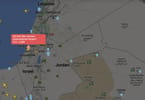United States House of Representatives by Rep. Daniel Lipinski (D-IL) has submitted a bill that seeks to set one enforceable standard for all bags carried onboard US commercial aircraft. The Securing Carry-On Baggage Act, H.R. 2870, would create a universal size requirement for carry-on bags instead of allowing each carrier to determine its own size requirements. The bill also requires that restrictions be enforced at screening locations through use of a template.
According to the Association of Flight Attendants-CWA (AFA-CWA) international president Patricia Friend this is an “exploding problem.” She stated: “The lack of uniformity in carrier programs and effective enforcement makes carry-on baggage a multi-faceted problem onboard aircraft today. Current programs to control the weight, size, number, and contents of carry-on bags are inconsistent, inadequate, confusing, and outdated. Passengers must navigate a maze of carry-on baggage programs that differ at each airline while flight attendants continue to have to settle overhead bin disputes and are often times injured by items that do not meet current guidelines.”
Current standards for carry-on baggage were established more than a decade ago when passengers brought far fewer items on board with them. Checked baggage fees, implemented by airline management recently, have drastically increased the amount of luggage being brought into the aircraft cabin. The revised guidelines will expedite the security screening and boarding processes and ultimately result in fewer delays.
The proposed bill would allow items 22 inches by 18 inches by 10 inches or smaller in the aircraft cabin. The bill also requires that the Transportation Security Administration (TSA) install and utilize a template with depth and width limitations that would prevent items that exceed the prescribed dimensions from passing through the conveyor belt.
WHAT TO TAKE AWAY FROM THIS ARTICLE:
- The bill also requires that the Transportation Security Administration (TSA) install and utilize a template with depth and width limitations that would prevent items that exceed the prescribed dimensions from passing through the conveyor belt.
- Passengers must navigate a maze of carry-on baggage programs that differ at each airline while flight attendants continue to have to settle overhead bin disputes and are often times injured by items that do not meet current guidelines.
- The proposed bill would allow items 22 inches by 18 inches by 10 inches or smaller in the aircraft cabin.






















